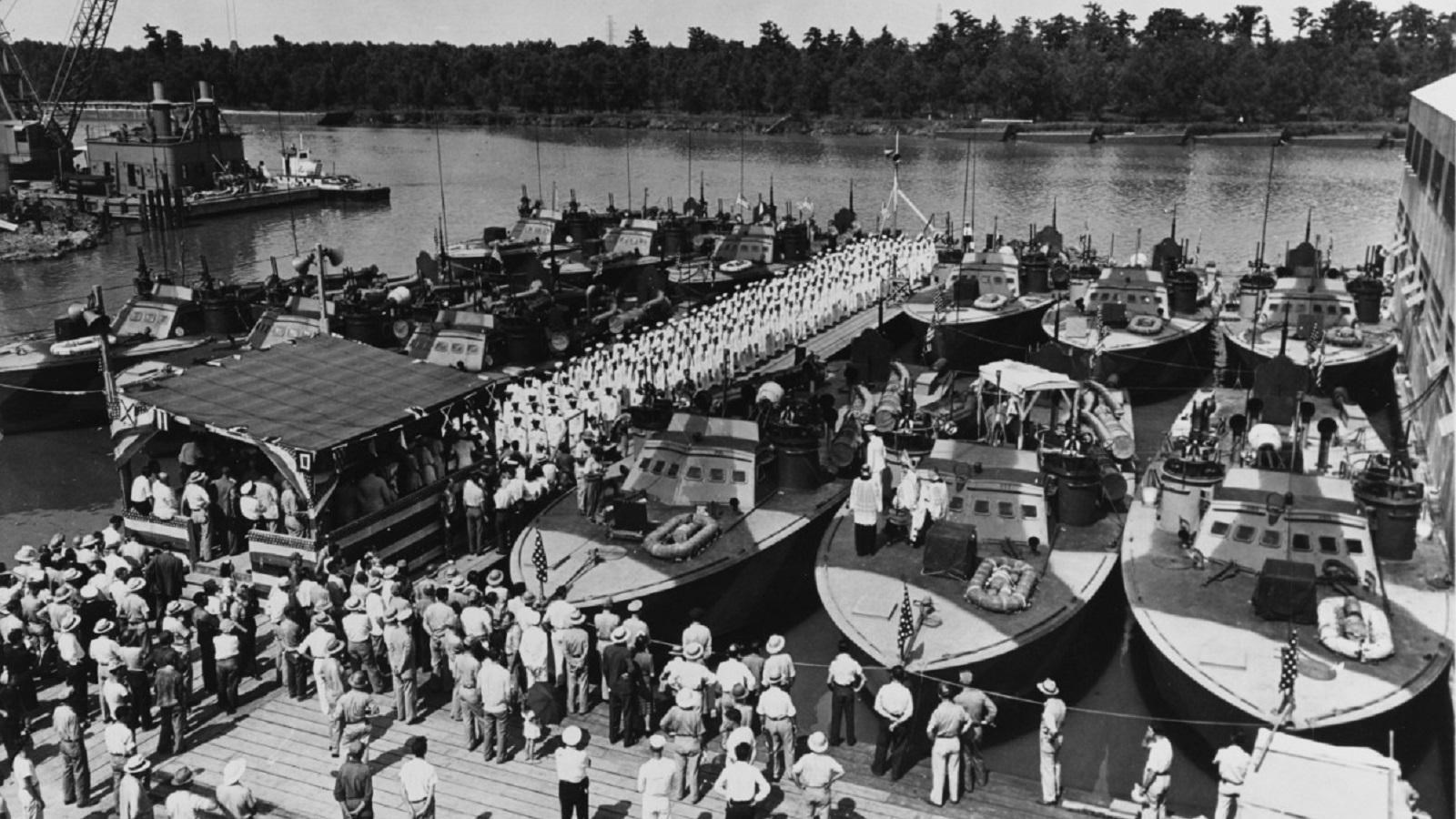Last updated: September 21, 2023
Place
New Orleans, Louisiana

US Navy, 1942
American World War II Heritage City
Due to its unique geography, New Orleans, Louisiana served as a Port of Embarkation for tens of thousands of soldiers and millions of tons of cargo and supplies to be transported overseas. Over one-third of the 16 million Americans who served in the war travelled through Louisiana or New Orleans for training and/or deployment. As a result, New Orleans experienced a huge influx of people from rural communities from across the region.
Higgins Industries designed and built a unique vessel that forever changed the Allied war strategy and the way navies fought and still fight wars. The "Higgins boats" - Landing Craft Vehicle and Personnel (LCVP) - allowed infantry and small vehicles to exit through a front ramp directly onto an open beach. In both the Pacific and Euorope the Higgins Boats allowed Allied troops to move ashore with speed across a wider area, forcing the defending armies to have to cover a larger area.
Higgins Industries had the first racially integrated workforce in New Orleans and they were all paid equal wages according to their job rating. With over 25,000 men and women the company had the largest integrated workforce in the South, producing over 20,000 craft. Local factories also built tugboats and the PBY Catalina maritime patrol aircraft.
New Orleans businesses also produced many other items, like lubricants and ropes, needed by the military and civilians alike, that were essential in moving machines and material overseas. Trappey’s Foods canned over 12 million pounds of sweet potatoes to be sent to troops overseas.
The city hosted multiple military installations or training facilities, including Camp Leroy Johnson; Algiers Naval Base, Jackson Barracks, and Camp Plauche. Addressing a vital need for trained staff, Charity Hospital in New Orleans formed one of the largest Cadet Nurse Corps programs, producing over 760 nurses, with many being deployed overseas.
By 1945, African American organizations in New Orleans, encouraged by the African American War Bond Savings Club, had purchased $5,072,942 in war bonds. The rationing of staple foods like rice, vegetables, and meat encouraged New Orleanians to establish Victory Gardens and embrace less traditional local meats like alligator, catfish, muskrat and rabbit as substitutes.
Active U-boat warfare in the Gulf of Mexico (where 56 vessels were sunk) meant that New Orleans relied on its civil defense preparations, including blackout and air-raid warnings throughout the war.
Throughout the city and its metro area, the legacy of World War II is celebrated and preserved through physical markers and memorials, nationally recognized museums, and rich cultural celebrations. Congress designated it as America’s National WWII Museum in 2004. Over the past 20 years, the museum has welcomed over 8 million visitors, including approximately 975,000 students and teachers, and has become one of America’s leading cultural institutions.
Various memorials have been erected throughout New Orleans, including the Third Ward WWII Memorial and a memorial at St. Louis Cemetery, erected by the Croatian Benevolent Association of Louisiana. On Canal Street stands “Molly Marine,” a 12-foot statue dedicated to the women of the US Marine Corps that was installed in 1942. Two markers recall the contributions of Higgins Industries to the war effort.
